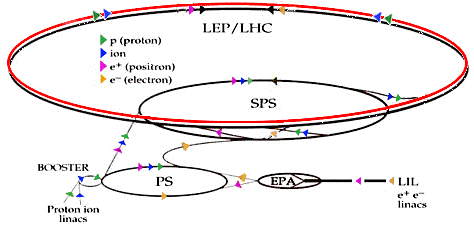Our group is engaged in both theoretical and experimental high-energy particle physics research; the study of matter at the most fundamental level, at the highest energies and the smallest distances.
High-energy physics is the domain of relativity and quantum mechanics, of quarks and leptons - and of international collaborations. The increasingly large and difficult experiments required in this field are now carried out by teams of tens, hundreds, or even thousands of scientists from many institutions around the world. The co-operative nature of the work provides an opportunity for small countries like Australia (and relatively small groups like ours in Sydney) to make a valuable contribution.
The results of these experiments have a bearing on astrophysics and cosmology, test the adequacy of our most successful physical theories and stimulate further theoretical developments, and contribute to the efforts of theoretical physicists and philosophers addressing fundamental questions about the cosmos.
High Energy Physics is able to study the world of subatomic particles by observing the collisions of particles that have been accelerated either by natural means (cosmic-rays) or by laboratory-based accelerators. Over the years we have been involved in both cosmic-ray and accelerator based research.
The image to the left shows a typical experiment at an accelerator facility. Fundamental particles (like protons or electrons) are injected into a large storage ring and accelerated to a maximum possible energy given by the power of the radio-frequency (RF) cavities that achieve the acceleration and the bending magnets that maintain the particles in their course. Detectors are constructed at intersection regions where the beams of particles are allowed to collide. These collisions are visualized by the debris that they produce. The initial stages of the collision are followed inside the vertex detector and since, generally, the collisions occur inside a magnetic field the charge and momentum of the out-going particles can be determined. Different components of the detectors are able to measure the energy (lead glass calorimeter) and the identification of the particles (for example, the muon barrel and endcap).
Studies of these collisions have produced a wealth of knowledge about the nature and number of subatomic particles that exist. From these experiments we have been able to establish the empirical backbone of our understanding on the way these fundamental particles can interact. So far, this has produced the Standard Model of particles and interactions. Quarks and leptons are the fundamental constituents of matter and these interact via four types of forces: the strong force, the weak force, the electromagnetic force and the gravitational force each mediated by "gauge bosons" (gluons, the W and Z particles, the photon and the graviton). Even though this model has been extremely successful, there are still questions that have yet to be verified. Does the Higgs particle responsible for the different masses of all other particles in the Standard Model really exist? Neutrinos are now known to be massive and "mix" between species - what are the masses and mixing parameters? What is the origin of the lack of symmetry that has been observed between neutral kaons and their anti-particles in the mirror world (CP violations)? How does it manifest itself with other neutral mesons like the B-mesons? At sufficiently high energies, is there a new state of matter (the quark-gluon plasma) in which quarks and gluons are no longer bound but are free entities?
These are some of the questions that we are trying to answer experimentally by joining international collaborations that are addressing them, such as ATLAS and Belle.
Our group has a long history of research into cosmic rays, the traditional source of very-high-energy particles (and still without rival at the highest energies). In the seventies we were involved in two neutrino physics experiments at the Fermilab particle accelerator complex outside Chicago. In the 1980's we also built a prototype solar neutrino detector, 1200 metres underground in a mine at Broken Hill.
In the 1990s we began to concentrate on research at particle accelerators, which provide beams of high-energy particles to a range of experiments. We joined the flagship CERN neutrino oscillation experiment NOMAD and its subsidiary experiment SPY, and also had an involvement in heavy ion experiments through the EMU01 Collaboration.
We are presently continuing to concentrate on research at particle accelerators. Members of our group are active in three collaborative experiments, at CERN, the European Particle Physics Laboratory outside Geneva, Switzerland, and at KEK, the High Energy Accelerator Research Organisation in Tsukuba, Japan.

A comprehensive list of high energy physics experiments throughout the world can be found through the following link at the Stanford Linear Accelerator Centre (SLAC).